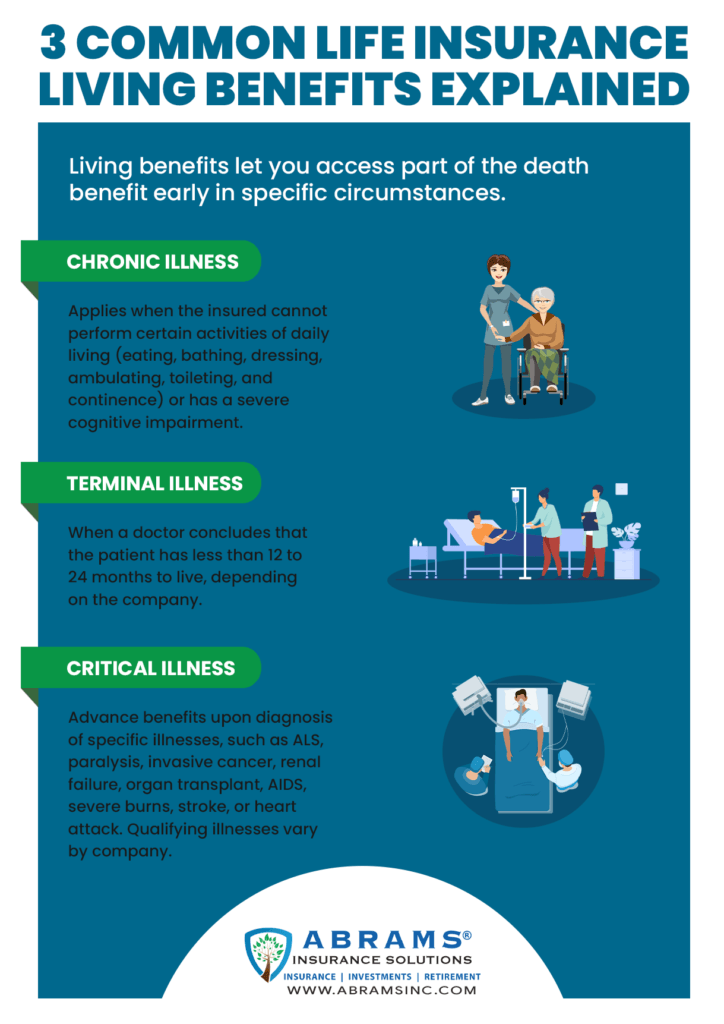Spinal Cord Injury in Car Accidents
When the lives of car accident victims are shattered, spinal cord injuries are often what shatter them. These injuries can range from mild to severe, but they all have the potential to cause lifelong disabilities. No one plans for car accidents. They can come out of nowhere, like a bolt from the blue, leaving us reeling in their wake. And when they do, the consequences can be devastating, especially if they result in spinal cord injuries.
Spinal cord injuries occur when the spinal cord is damaged, either by trauma or by a disease process. Trauma is the most common cause of spinal cord injuries, and car accidents are the leading cause of traumatic spinal cord injuries. According to the National Spinal Cord Injury Statistical Center, approximately 17,730 people in the United States sustain spinal cord injuries each year, and about 40% of these injuries are caused by car accidents.
The spinal cord is a long, thin bundle of nerves that runs from the brain down the back. It is responsible for sending messages between the brain and the rest of the body. When the spinal cord is damaged, these messages can be interrupted, which can lead to a variety of problems, including paralysis, loss of sensation, and difficulty with bowel and bladder function.
Spinal cord injuries can be classified as either complete or incomplete. A complete spinal cord injury means that all sensation and movement below the level of the injury is lost. An incomplete spinal cord injury means that some sensation and movement below the level of the injury is preserved.
The severity of a spinal cord injury depends on the location and extent of the damage. Injuries to the higher levels of the spinal cord can lead to more severe disabilities than injuries to the lower levels of the spinal cord.
There is no cure for spinal cord injuries, but there are treatments that can help to improve function and quality of life. These treatments may include surgery, medication, physical therapy, and occupational therapy.
Symptoms of Spinal Cord Injury
The symptoms of a spinal cord injury can vary depending on the severity of the injury. Some common symptoms include:
- Paralysis or weakness in the arms or legs
- Loss of sensation in the arms or legs
- Difficulty with bowel and bladder function
- Sexual dysfunction
- Pain
- Spasticity
If you experience any of these symptoms after a car accident, it is important to seek medical attention immediately. Early diagnosis and treatment can help to improve the chances of recovery.
Spine Injury from Car Accident
Car accidents, with their sudden, violent forces, can wreak havoc on our delicate spines. One of the most catastrophic outcomes is a spine injury, which can have far-reaching consequences, diminishing our mobility, independence, and quality of life. If you’ve been involved in a car accident, it’s imperative to seek medical attention immediately, as even seemingly minor injuries can mask severe spinal damage.
Causes
During a car accident, the spine is subjected to extreme forces that can overwhelm its protective structures. These forces can cause:
• **Fractures or dislocations of the vertebrae:** The vertebrae, the bony building blocks of the spine, can crack or shift out of place due to the impact. This damage can compress or sever the spinal cord, disrupting the delicate signals that travel from the brain to the rest of the body.
• **Spinal cord injuries:** The spinal cord, the lifeline of our nervous system, can suffer a range of injuries from compression and stretching to complete transection. These injuries disrupt the communication pathways between the brain and the body, leading to loss of sensation, movement, and autonomic functions.
• **Nerve root injuries:** The nerve roots, which branch off from the spinal cord to innervate our muscles and organs, can be pinched or damaged by displaced vertebrae or bone fragments. This can result in numbness, weakness, or pain in the affected areas.
• **Ligament and muscle injuries:** The ligaments and muscles that support the spine can be torn or overstretched, leading to pain, instability, and impaired mobility.
The severity of a spine injury depends on many factors, including the location and type of injury, the force of the impact, and the individual’s pre-existing health conditions. Early diagnosis and treatment are crucial for minimizing the long-term impact of these devastating injuries.
Spine Injury from Car Accident
A car accident can be a life-altering event, and one of the most serious injuries that can occur is a spine injury. A spine injury can cause a wide range of symptoms, from minor discomfort to complete paralysis. If you have been involved in a car accident, it’s important to seek medical attention immediately if you experience any of the following symptoms.
Symptoms
The symptoms of a spine injury can vary depending on the severity of the injury. Some of the most common symptoms include:
- Numbness or tingling in the arms or legs
- Weakness in the arms or legs
- Pain in the neck, back, or head
- Difficulty walking or balancing
- Loss of bowel or bladder control
If you experience any of these symptoms after a car accident, it’s important to seek medical attention immediately. Even if your symptoms are minor, they could be a sign of a more serious injury.
The most severe spine injuries can result in paralysis. Paralysis can occur when the spinal cord is damaged, which can disrupt nerve signals between the brain and the body. Paralysis can affect any part of the body, from the neck down. There are different types of paralysis, including:
- Monoplegia: Paralysis on one side of the body.
- Hemiplegia: Paralysis on one side of the body, including the arm and leg.
- Paraplegia: Paralysis of both legs.
- Quadriplegia: Paralysis of both arms and legs.
The type of paralysis that occurs depends on the location and severity of the spinal cord injury. Paralysis can be a life-changing condition, but there are treatments and therapies that can help people with paralysis live full and active lives.
Spine Injury from Car Accident
Car accidents are a leading cause of spinal cord injuries in the United States. The force of a collision can damage the delicate bones, ligaments, and discs that make up the spine, sometimes resulting in life-altering injuries. If you’ve been involved in a car wreck and are experiencing back pain, numbness, tingling, or weakness, it’s crucial to seek medical attention right away as these can be signs of a spine injury.
Diagnosis
Diagnosing a spine injury involves a thorough examination by a doctor. They will assess your symptoms and perform physical tests to check for any abnormalities in your range of motion, sensation, and reflexes. Imaging tests like X-rays or MRI scans may also be ordered to visualize the spine and identify any fractures, dislocations, or other damage.
Treatment
The treatment for a spine injury depends on the severity of the damage. Some minor injuries may heal with rest and physical therapy. In more serious cases, surgery may be necessary to repair or stabilize the spine.
Recovery
The recovery process from a spine injury can be long and challenging, but with the right care and support, most people can make a full recovery. Physical therapy plays a crucial role in regaining strength, mobility, and function. Emotional support from family, friends, and support groups can also aid in the healing process.
Prevention
While not all car accidents are preventable, there are steps you can take to reduce your risk of a spine injury. Wear your seatbelt every time you drive or ride in a motor vehicle. Avoid driving while under the influence of alcohol or drugs, and obey speed limits. Make sure your car is properly maintained and has adequate safety features, such as airbags.
Spine Injuries from Car Accidents
A car accident can be a life-altering event, and the injuries sustained can range from minor to severe. One of the most serious injuries that can occur in a car accident is a spine injury. A spine injury can cause a variety of symptoms, including pain, numbness, and weakness. In some cases, a spine injury can even lead to paralysis.
If you have been involved in a car accident and you are experiencing any symptoms of a spine injury, it is important to seek medical attention immediately. Early diagnosis and treatment can help to improve your chances of a full recovery.
Symptoms
There are a variety of symptoms that can indicate a spine injury, including:
* Pain in the neck, back, or head
* Numbness or tingling in the arms or legs
* Weakness in the arms or legs
* Difficulty with balance or coordination
* Loss of bowel or bladder control
If you experience any of these symptoms after a car accident, it is important to seek medical attention immediately.
Causes
Spine injuries can be caused by a variety of factors, including:
* Direct Trauma: This can occur when the spine is hit by a hard object, such as the dashboard or steering wheel in a car accident.
* Indirect Trauma: This can occur when the body is twisted or bent in an unnatural way, such as when the head is hit from the side in a car accident.
* Compression: This can occur when the spine is pressed between two objects, such as the roof and the seat of a car in a car accident.
Diagnosis
A doctor will diagnose a spine injury based on a physical examination and a medical history. The doctor may also order imaging tests, such as an X-ray, CT scan, or MRI, to get a better look at the spine.
Treatment
Treatment for a spine injury aims to stabilize the spine and minimize further damage. Treatment options may include:
Surgery
Surgery may be necessary to stabilize the spine and repair any damage. Surgery is typically performed when the spine is unstable or when there is nerve damage.
Immobilization
Immobilization involves using a brace or cast to keep the spine in place. Immobilization is typically used to treat stable spine injuries.
Rehabilitation
Rehabilitation involves exercises and physical therapy to help the patient regain strength and function. Rehabilitation is typically started once the spine has healed.
Other Treatment Options
In addition to surgery, immobilization, and rehabilitation, other treatment options for spine injuries may include:
* Medication to relieve pain and inflammation
* Physical therapy to improve range of motion and strength
* Occupational therapy to help the patient learn how to perform everyday activities
Recovery
Recovery from a spine injury can be a long and challenging process. The recovery time will vary depending on the severity of the injury. With proper treatment and rehabilitation, most people can make a full recovery.
Prevention
There are a number of things you can do to prevent spine injuries in car accidents, including:
* Always wear your seatbelt
* Adjust your seat so that you can reach the steering wheel and pedals comfortably
* Keep your head and neck supported by the headrest
* Avoid driving while intoxicated or drowsy
Spine Injury from Car Accident: A Life-Altering Trauma
In the aftermath of a catastrophic car accident, the impact reverberates far beyond the crumpled metal. For some, it can mean grappling with devastating injuries to the spinal cord, marking a profound turning point in their lives. These injuries, often sudden and unexpected, can leave victims grappling with loss of mobility, chronic pain, and a spectrum of other challenges. Understanding the nature and impact of spinal cord injuries from car accidents is crucial for informed decision-making and charting a path forward.
Mechanism of Injury
During a car crash, the violent forces involved can cause the vertebrae to fracture or dislocate, compressing or severing the delicate spinal cord within. The extent of damage varies depending on the severity of the impact and the precise location of the injury. These injuries can disrupt essential pathways of communication between the brain and the rest of the body, leading to a range of neurological deficits.
Types of Spinal Cord Injuries
Spinal cord injuries are classified based on their location and severity. Incomplete injuries involve partial damage to the spinal cord, while complete injuries result in a complete loss of function below the point of injury. Injuries can affect motor function, sensation, or both, with tetraplegia and paraplegia representing the most severe forms of paralysis.
Symptoms of Spinal Cord Injury
The symptoms of spinal cord injury can vary widely depending on the location and extent of the damage. Common symptoms include:
- Pain
- Numbness or tingling
- Weakness
- Loss of bowel or bladder control
- Difficulty breathing
- Numbness or tingling in the arms or legs
- Muscle weakness or paralysis
- Loss of sensation or movement below the level of the injury
- Difficulty breathing or swallowing
- Headache or neck pain
- Wear a seatbelt. Seatbelts are the most effective way to prevent SCIs and other serious injuries in car accidents.
- Avoid distracted driving. Distracted driving is a major cause of car accidents. When you’re driving, focus on the road and avoid talking on your phone, texting, or eating.
- Reduce speed. Speeding increases the risk of a serious car accident, which can lead to an SCI.
- Drive defensively. Be aware of other cars and pedestrians, and drive defensively to avoid accidents.
- Never drive under the influence of alcohol or drugs. Alcohol and drugs impair your judgment and coordination, increasing your risk of a car accident.
- Get regular checkups. Regular checkups can help you identify and treat health conditions that could increase your risk of an SCI, such as obesity and diabetes.
- Stay active. Regular exercise can help you maintain a healthy weight and improve your strength and balance, which can reduce your risk of falls and other injuries.
- Surgery to stabilize the spine and repair the spinal cord
- Physical therapy to improve range of motion and strength
- Occupational therapy to help you learn how to perform everyday activities
- Speech therapy to improve communication skills
- Medication to manage pain and other symptoms
- Counseling to help you cope with the emotional and psychological effects of an SCI
li>Paralysis
Diagnosis and Treatment
Diagnosing spinal cord injuries requires a thorough medical evaluation, including physical examination, imaging tests, and neurological assessments. Treatment options may vary based on the severity of the injury, ranging from immobilization and pain management to surgical interventions and rehabilitation. The primary goal of treatment is to stabilize the spine, prevent further damage, and maximize functional recovery.
Prognosis
The prognosis for spinal cord injury depends on the severity and location of the damage, with complete injuries often resulting in permanent paralysis. Incomplete injuries may have varying degrees of recovery, depending on the extent of damage and the individual’s response to rehabilitation. Factors such as age, overall health, and the availability of support systems also influence the recovery trajectory.
Living with Spinal Cord Injury
Living with spinal cord injury can be a complex and challenging journey. Individuals may face physical, emotional, and social obstacles. Rehabilitation plays a vital role in helping individuals regain function, adapt to their new circumstances, and live as fulfilling lives as possible. Support from family, friends, and professional caregivers is invaluable in navigating the challenges and maximizing well-being.
Conclusion
Spinal cord injuries from car accidents are life-altering events that can have profound physical, emotional, and social consequences. Understanding the nature and impact of these injuries is essential for victims, their loved ones, and healthcare professionals. Advances in medical care and rehabilitation have improved outcomes for individuals with spinal cord injuries, empowering them to live meaningful and fulfilling lives despite the challenges they face.
Spine Injury from Car Accident: What You Need to Know
Spinal cord injuries (SCIs) can be devastating, often leading to paralysis, loss of mobility, and a long and difficult recovery. Car accidents are a leading cause of SCIs, with approximately 11,000 people sustaining an SCI each year as a result of a motor vehicle crash.
The severity of an SCI depends on the location and severity of the injury. Injuries to the cervical (neck) spine are more likely to result in paralysis than injuries to the lumbar (lower back) spine. Complete SCIs involve a complete loss of sensation and movement below the level of the injury, while incomplete SCIs involve partial loss of function.
Symptoms
Symptoms of an SCI can vary depending on the severity of the injury. Common symptoms include:
Causes
Car accidents are the most common cause of SCIs, accounting for nearly half of all cases. Other causes include falls, sports injuries, and workplace accidents.
In a car accident, the force of the impact can cause the spine to twist, bend, or fracture. This can damage the spinal cord, which is a bundle of nerves that runs from the brain to the rest of the body.
Prevention
There are a number of things you can do to reduce your risk of an SCI in a car accident:
Treatment
There is no cure for an SCI, but treatment can help to minimize the damage and improve function. Treatment may include:




Leave a Reply